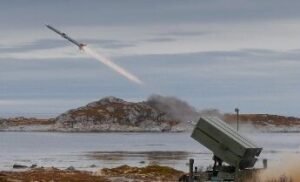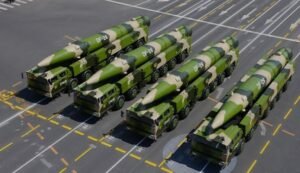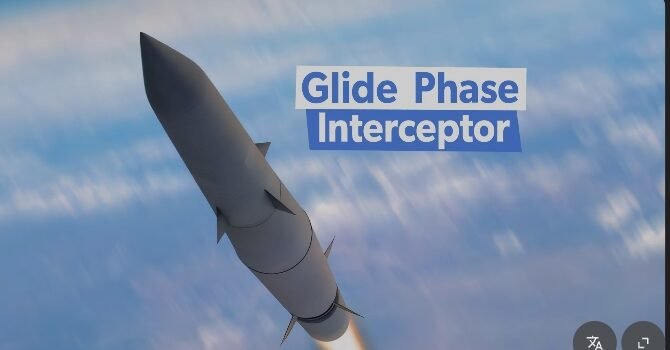How advanced is the U.S. missile defense colitisystem compared to offensive technologies? How far along is America? Missile Defense System Compared to Offensive Technologies?
The U.S. missile defense system is among the most sophisticated in the world, built to counter a wide array of threats ranging from rogue state attacks to intercontinental ballistic missiles (ICBMs). However, as missile technologies rapidly evolve—especially with the emergence of hypersonic and maneuverable reentry vehicles—the balance between defensive and offensive capabilities is shifting. This article explores how advanced the U.S. missile defense system truly is when compared to modern offensive missile technologies.How advanced is the U.S. missile defense colitisystem compared to offensive technologies?
U.S. Missile Defense Infrastructure
The U.S. missile defense architecture is multi-layered and globally integrated, comprising land, sea, air, and space-based systems. Its primary components include:

Ground-based Midcourse Defense, or GMD, is designed to stop ICBMs in their mid-course phase as they travel through space. Located in Alaska and California, GMD uses Ground-Based Interceptors (GBIs).
Aegis Ballistic Missile Defense: A sea-based system equipped on U.S. Navy ships, using Standard Missile (SM) variants like SM-3 to intercept short to intermediate-range threats.
The Patriot Missile System is efficient against threats with a short range, particularly in theater defense and tactical scenarios. Space-based sensors and early warning satellites: Used for threat detection, tracking, and battle management.
These systems together form an elaborate defense shield capable of handling various classes of missile threats, particularly from countries like North Korea and Iran.
Strengths of U.S. Missile Defense
1. Layered Defense Strategy: The U.S. system intercepts threats at different phases—boost, midcourse, and terminal—maximizing interception chances.
2. Global Coverage: The reach of missile defense is both strategic and adaptable thanks to deployments overseas in Japan, South Korea, Europe, and naval vessels.
3. Advanced Sensors and Integration: Real-time data from satellites and radar systems like AN/TPY-2 enhance accuracy and interception reliability.How advanced is the U.S. missile defense colitisystem compared to offensive technologies?
4. Allied Interoperability: Missile defense cooperation with allies (e.g., NATO BMD, Israel’s Arrow and Iron Dome integration) strengthens regional defense networks.
Challenges and Limitations
Despite its technological sophistication, the U.S. missile defense system faces several limitations:
1. Hypersonic Threats: Hypersonic glide vehicles (HGVs) and hypersonic cruise missiles, now fielded by Russia and China, fly at over Mach 5 with unpredictable trajectories, challenging existing radar and interception systems.
2. Cost-Effectiveness: Defensive interceptors like THAAD or GM How far along is America? Missile Defense System Compared to Offensive Technologies?
The U.S. missile defense system is among the most sophisticated in the world, built to counter a wide array of threats ranging from rogue state attacks to intercontinental ballistic missiles (ICBMs). However, as missile technologies rapidly evolve—especially with the emergence of hypersonic and maneuverable reentry vehicles—the balance between defensive and offensive capabilities is shifting. This article explores how advanced the U.S. missile defense system truly is when compared to modern offensive missile technologies.
U.S. Missile Defense Infrastructure
The U.S. missile defense architecture is multi-layered and globally integrated, comprising land, sea, air, and space-based systems. Its primary components include:
Ground-based Midcourse Defense, or GMD, is designed to stop ICBMs in their mid-course phase as they travel through space. Located in Alaska and California, GMD uses Ground-Based Interceptors (GBIs).
Aegis Ballistic Missile Defense: A sea-based system equipped on U.S. Navy ships, using Standard Missile (SM) variants like SM-3 to intercept short to intermediate-range threats.
The Patriot Missile System is efficient against threats with a short range, particularly in theater defense and tactical scenarios. Space-based sensors and early warning satellites: Used for threat detection, tracking, and battle management.How advanced is the U.S. missile defense colitisystem compared to offensive technologies?
These systems together form an elaborate defense shield capable of handling various classes of missile threats, particularly from countries like North Korea and Iran.
Strengths of U.S. Missile Defense
1. Layered Defense Strategy: The U.S. system intercepts threats at different phases—boost, midcourse, and terminal—maximizing interception chances.
2. Global Coverage: The reach of missile defense is both strategic and adaptable thanks to deployments overseas in Japan, South Korea, Europe, and naval vessels.
3. Advanced Sensors and Integration: Real-time data from satellites and radar systems like AN/TPY-2 enhance accuracy and interception reliability.
4. Allied Interoperability: Missile defense cooperation with allies (e.g., NATO BMD, Israel’s Arrow and Iron Dome integration) strengthens regional defense networks.
Challenges and Limitations
Despite its technological sophistication, the U.S. missile defense system faces several limitations:
1. Hypersonic Threats: Hypersonic glide vehicles (HGVs) and hypersonic cruise missiles, now fielded by Russia and China, fly at over Mach 5 with unpredictable trajectories, challenging existing radar and interception systems.How advanced is the U.S. missile defense colitisystem compared to offensive technologies?
2. Cost-Effectiveness: Defensive interceptors like THAAD or GMD are significantly more expensive than offensive missiles. An adversary can deploy decoys and overwhelm defense with saturation attacks.
3. Limited Interceptor Inventory: For example, the U.S. only has a few dozen GBIs, insufficient for a full-scale ICBM assault.
4. Boost Phase Interception Gaps: Stopping a missile during its boost phase is ideal but technologically elusive due to short engagement windows and limitations in positioning interceptors close to launch zones.
Compared to Harmful Technologies
Modern offensive missile technologies are outpacing defenses in several areas:
China’s DF-17 and Russia’s Avangard hypersonic glide vehicles can maneuver at extreme speeds, making tracking and interception nearly impossible with today’s systems.
Multiple Independently Targetable Reentry Vehicles (MIRVs) on ICBMs allow one missile to release multiple warheads, increasing penetration capability.
Decoys and countermeasures deployed by offensive missiles confuse radar systems, degrading interception probability.
Offensive systems are cheaper, easier to proliferate, and more flexible in terms of range, payload, and delivery methods. 
Future Prospects
To bridge the gap, the U.S. is investing in next-generation technologies:
Glide Phase Interceptors (GPI) are being developed to target hypersonics in their glide phase.How advanced is the U.S. missile defense colitisystem compared to offensive technologies?
Directed Energy Weapons like high-powered lasers may offer cost-effective, rapid-fire interception capability in the next decade.
Space-based sensors and kill vehicles are being researched for persistent tracking and early interception.
Moreover, the Next Generation Interceptor (NGI) program aims to replace aging GMD systems with smarter, more agile interceptors.
Conclusion
While the U.S. missile defense system is currently one of the most advanced in the world, it is playing catch-up with the rapid pace of offensive missile development. Hypersonic weapons, MIRVs, and advanced decoys are posing serious threats that today’s systems are ill-equipped to deal with. However, ongoing investments in sensor fusion, artificial intelligence, space-based systems, and directed energy suggest the U.S. is gearing up form there Next Era of missiles defense. The races Between offense and defense continues—with global security hangings in the balances.
